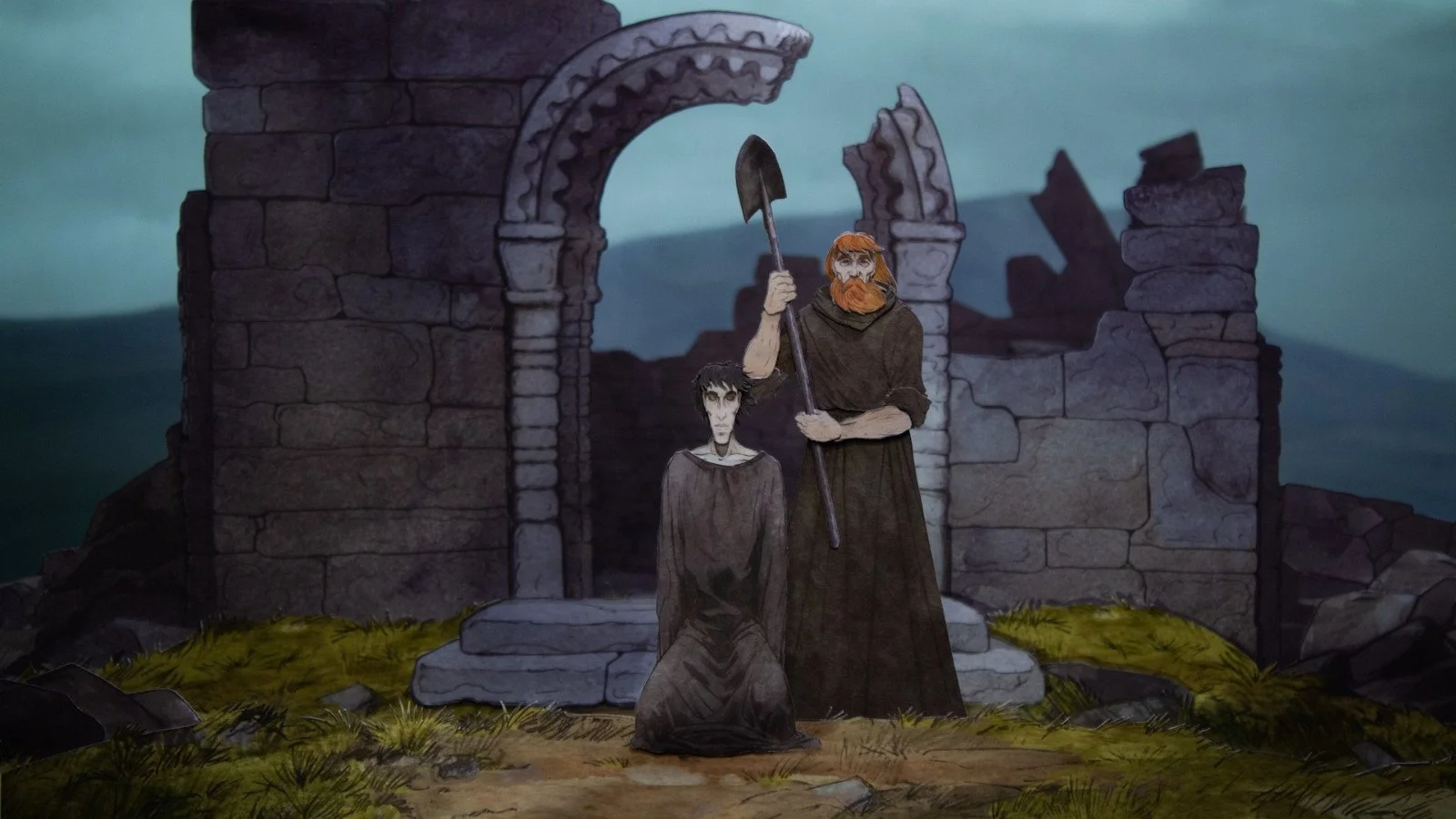The Grave of St. Oran: Clever Adaptation of Neil Gaiman Story Rattles Notions of Faith
By John Kirk
“He will touch you, he will taste you, he will leave his words inside you. God is not what you imagine, nor is hell, and nor is heaven.”
Premiering at San Diego Comic Con, The Grave of Saint Oran — an eight-minute short animation of the short story In Reilig Odhrain by Neil Gaiman — explores the history and legend of the tiny Isle of Iona off the coast of Scotland.
Home to the graves of saints and Kings of Scotland, Ireland and Norway, the island has a dark history from the time when Saints Columba and Oran first made landfall on it centuries ago to build a chapel that eventually became the foundation of Gaelic Catholicism.
Narrated and written by Gaiman, this eerie short film is directed by two-time Emmy nominee Jim Batt. Using highly detailed and crafted paper cut-outs, the animation is masterful and conveys a whispered legend from long ago.
The chapel that the saints build on the island constantly crumbles. In a dream, a revelation or some sort of supplication from sinister origins, Columba believes that the chapel cannot be build unless Oran is laid to rest in its foundations. Out of desperation, the saint murders his companion and buries him beneath the chapel.
In the legend, it is suggested that Oran is killed out of an argument over doctrine. But another implication is that he dies from a sort of ritual killing, and one most decidedly pagan. This, of course, is a shadow on the reputation of the saints themselves, for if the bedrock of Scottish Catholicism is built with the bones of murdered saint, then how can we see this chapel as one sanctified by God?
It only took eight minutes for Gaiman’s story to insert doubt about one’s faith into a reader’s mind and this short film perfectly visualizes that exact message.
But, that’s the realm of every ghost story, isn’t it? After all, shadows and mystery are all elements of the unknown and that’s the one thing that everybody fears in some way or another: what we don’t know. It’s the mark of Gaiman’s talent, as reflected in this adaptation: to effectively twist faith, which is a reassurance in things unseen, and turn it into not only a sense of fear but an anxiety.
In a further step, the legend of Oran says that he was killed, buried, and then was dug up by Columba after three days in order for the saint to say his goodbyes. When they retrieved the body, cleared away the mud from his face, his eyes opened and he uttered these words:
“God is not what you imagine, nor is hell, nor is heaven.”
Oran, of course, speaks from a new source of experience. After all, he has been sacrificed, presumably in the name of God, for His glory and in a caricature of the resurrection, has now returned with a sense of unearthly wisdom.
In response, Columba buries the saint again and leaves him in the foundations of the chapel, alone on the island forevermore.
Gaiman makes us doubt our faith, which is no small feat for an eight-minute tale.
The Grave of St. Oran. Written by Neil Gaiman. Directed by Jim Batt. To be released in late summer.



